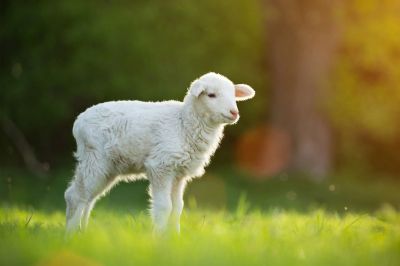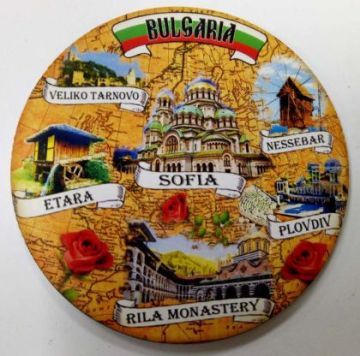Date: 06 May 2025
St. George’s Day – Bulgarian Traditions of the Feast of Courage and Fertility
St. George’s Day, celebrated on May 6, is one of the most revered folk and religious holidays in Bulgaria. It combines the Christian veneration of St. George the Victorious with deep traditional customs tied to spring, fertility, health, and new beginnings. The holiday is also officially recognized as the Day of Bravery and the Bulgarian Army.
1. The Sacrificial Lamb – The Central Ritual
The most well-known and widespread custom of St. George’s Day is the slaughter and preparation of a lamb. According to tradition, the lamb is offered as a sacrifice to St. George, to bring health, fertility, and protection to the household.
- The lamb is typically slaughtered early in the morning.
- Beforehand, it is censed with incense, and its head is decorated with a wreath of geranium and red threads.
- It is roasted whole in an oven or in a special pit in the ground, covered with leaves and soil—a method known as “earth-roasting.”
2. Green Wreaths and Dew Bathing
St. George’s Day is closely associated with the blooming of nature and the magical powers of morning dew.
- Girls weave wreaths of geranium, nettle, hawthorn, and other herbs, which are hung above doorways for health and protection.
- It is believed that bathing in dew or rolling in the morning grass on this day brings good health for the entire year.
- In some regions, ritual bathing of shepherds and livestock also takes place, with the belief that it will bring an abundance of milk.
3. Releasing the Animals and First Milking
Traditionally, St. George’s Day marks the start of the new agricultural and pastoral year.
- Shepherds take the flocks out to pasture for the first time.
- A ritual first milking is performed, and the first milk is used to make special ceremonial dishes.
- Livestock is smoked with herbs to protect them from illness and evil spirits.
4. Ritual Foods on the Festive Table
Certain dishes are a must on the St. George’s Day table:
- Roast lamb – usually served with drob-sarma (rice and liver stuffing) and green herbs;
- Freshly baked round bread, often decorated with animal shapes;
- Dairy products – such as cheese and yogurt made from the first milk;
- Dyed Easter eggs – saved from Easter and used for health and blessing.
5. Songs, Dances, and Folk Celebrations
In villages, the holiday often turns into a large folk celebration, where everyone—young and old—joins in.
- Traditional songs are sung, bagpipes and drums are played, and a traditional “horo” dance is performed in the village square.
Since 1880, St. George’s Day has also been the official holiday of the Bulgarian Army. Celebrations include military parades, laying of wreaths at monuments, and ceremonies filled with patriotism and reverence for bravery.
St. George’s Day is not just another date on the calendar. It is a celebration of renewal, strength, and the deep bond between people and nature. It blends spirituality, tradition, and love for the land—making it a special and vibrant holiday that lives on to this day.

 Bulgarian traditional souvenirs
Bulgarian traditional souvenirs
 Festive souvenirs
Festive souvenirs
 Gifts
Gifts
 Religious figures
Religious figures









Post comment